Fengqing Ancient Tree Spring Chun Jian Raw Pu-erh Cake Tea 2012
$45.00 – $198.90Price range: $45.00 through $198.90
Description
| Origin: | Fengqing County, Lincang City, Yunnan Province, China |
|---|---|
| Harvest Date: | Tea Leaves Hand-picked between March 10, 2012 and April 20, 2012 |
| Production Date | November 18, 2014 |
| Net Weight | 357g |
| Dry Leaf: | Round compressed cake shape, Made of 100% pure one bud with one to three tea leaves |
| Aroma: | Fresh and fruity |
| Liquor: | Brilliant light yellow |
| Taste: | Taste soft of first sip, smooth, quick sweet after-taste,
the earthiness is perfectly complimented by the silky honey notes. |
| Tea Bush: | Fengqing large-leaf tea bush species |
| Tea Garden: | Mengyou Tea Area (about 2500 meters) |
| Caffeine: | Moderate caffeine (less than 20% of a cup of coffee) |
| Storage: | Store in cool, dry place away from sunlight; keep ventilated |
| Shelf Life: | The aged the better |
 |
Cup Method |
 |
Chinese Gongfu Method |
 |
Teacup: 12oz / 355ml |  |
Gaiwan: 3.8oz / 110ml |
 |
203℉ / 95℃ |  |
203℉ / 95℃ |
 |
5g Tea |  |
8g Tea |
 |
Brewing time: 3 – 5 mins |  |
10 steeps: rinse,10s,10s,10s,20s,20s,30s,30s,45s,45s,60s |
| Rinse time is 3 seconds |
There are fifteen towns in Fengqing that cultivate old tea trees, including Xiang Zhu in Xiaowan Town; Xinyuan; Dashi Village; Mengyou Village; Yongxin; and others, all in all totalling around 31,000 mu.
Mengyou in Yunnan is an area thick with wild tea trees, half wild and half cultivated. Many of the old trees here are aged to a few hundred years, while a rare few are a thousand or more. The ancient tea plantations here in Mengyou establish a special cultural landscape, giving great vitality to this place.
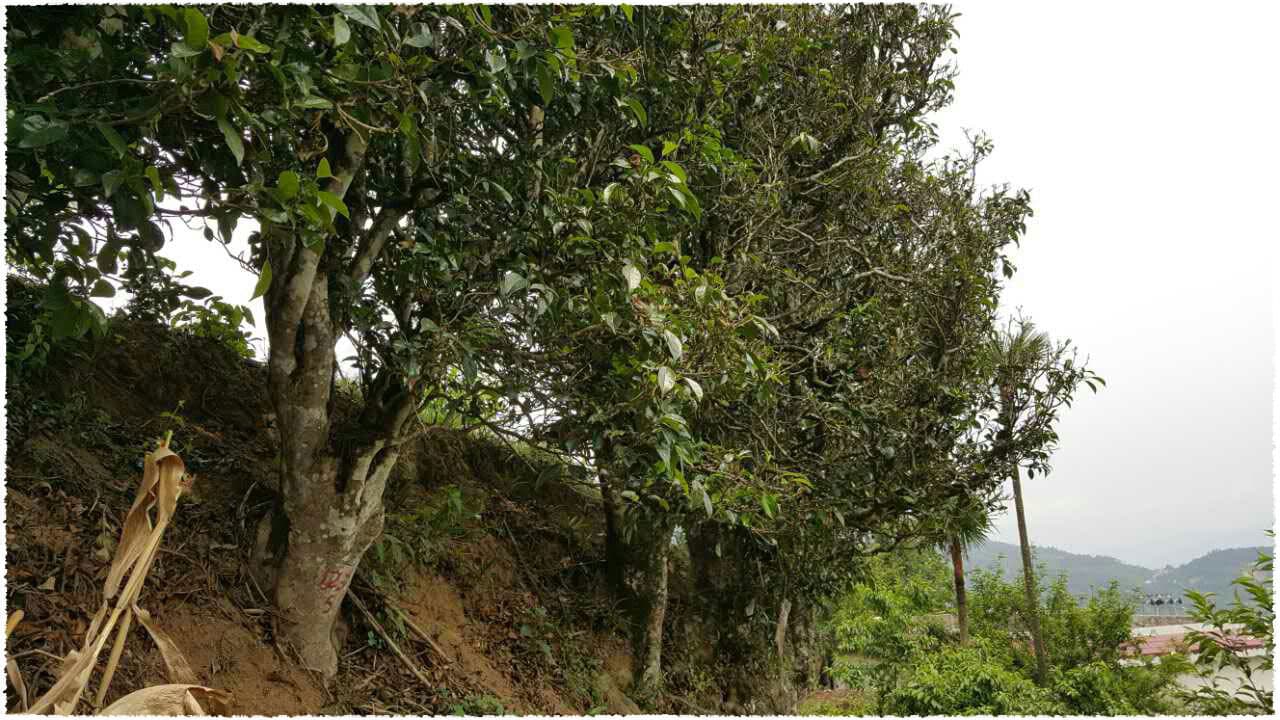
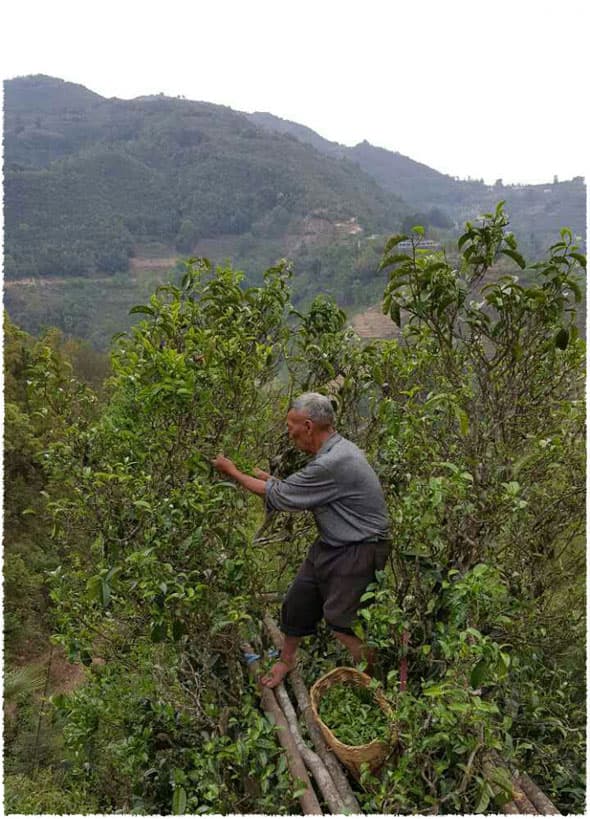
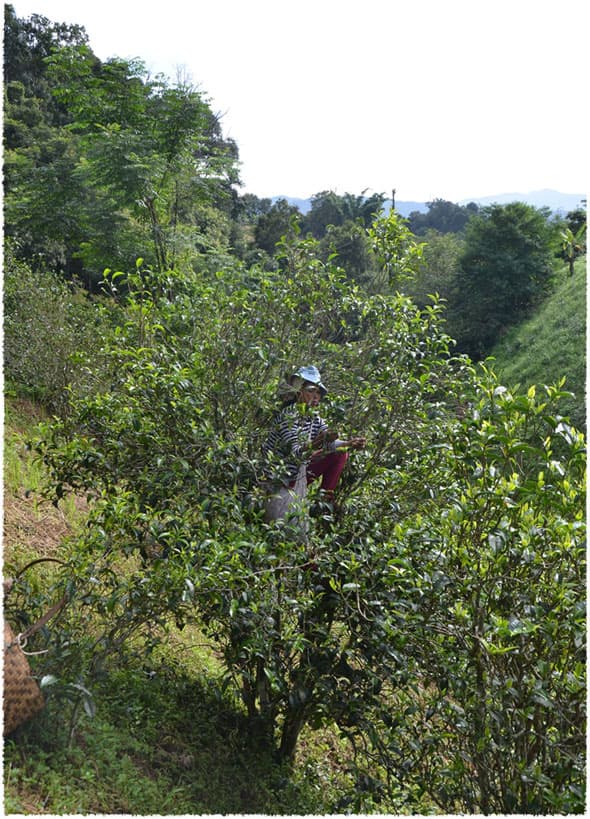
This pu-erh cake comes from the representative pu-erh production area, Fengqing, in the southern part of the Dianxi Longitudinal Valley. Fenging is a county in the northwest of Lincang, one of the four famous pu-erh production areas (among Xishuangbanna, Pu’er, and Baoshan), and is one of the first birthplaces of tea in the entire world. It is also famous as the hometown of Yunnan black tea in Lincang. Fengqing has a long history of planting, producing, and drinking tea, and the land features a throng of mountains webbed with rivers.
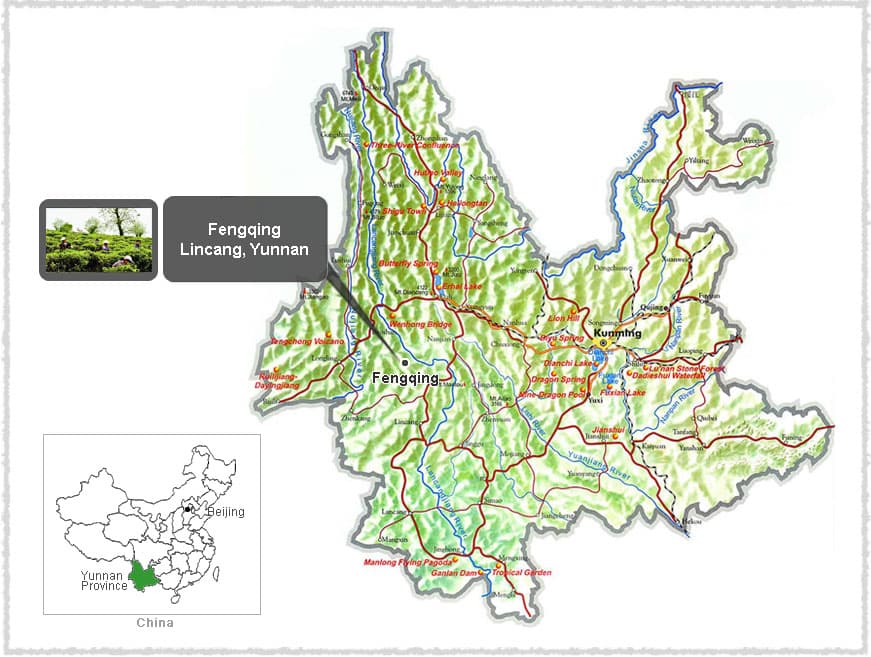
This tea is made from the Fengqing large-leaf species, a type of Yunnan large-leaf tea tree. It propagates sexually and takes the form of a super large-leaf arbor, which means that this plant can grow to over six meters tall. In 1984 the Fengqing large-leaf species was certified by the Chinese government as a national grade. It contains an abundant amount of tea polyphenol and catechins, 30.2% and 13.4% respectively, and also contains 2.9% amino acids and 3.2% caffeine.
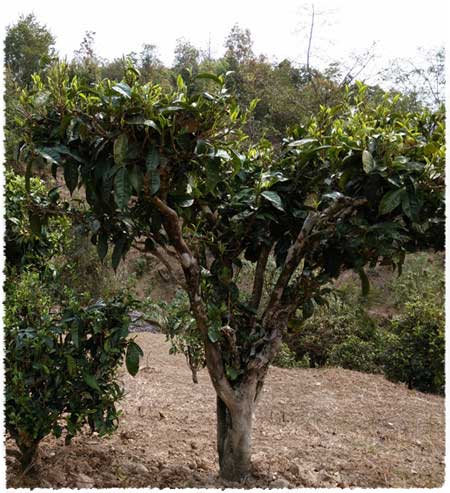
Pu-erh tea is one of the oldest types of Chinese tea, with a history stretching back over 1,700 years to the Eastern Han Dynasty, when the tea was called Jing Cha. It is named after the town of Pu’er in Yunnan province, which was the earliest trading center for this tea. In its early history pu-erh was used as a bartering currency throughout southwest China, and there the famed Cha Ma Gu Dao – or Tea Horse Road – was built especially to transport this tea through the Himalayas to other countries and areas in Tibet.
Additional information
| quantity | one, two, three, four, five |
|---|
Related Products
Related products
-
Sale!
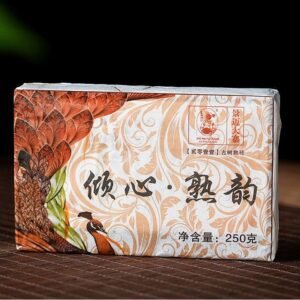
Jingmai Ancient Tree Ripened Pu-erh Brick Tea 2011
$159.00 – $738.00Price range: $159.00 through $738.00 Select options This product has multiple variants. The options may be chosen on the product page -
Sale!
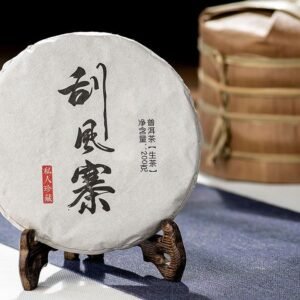
Gua Feng Zhai Ancient Tree Raw Pu-erh Cake Tea 2019
$69.90 – $319.00Price range: $69.90 through $319.00 Select options This product has multiple variants. The options may be chosen on the product page -
Sale!

Dreamy Hawaii Fruit Tea
$11.80 – $16.80Price range: $11.80 through $16.80 Select options This product has multiple variants. The options may be chosen on the product page -
Sale!
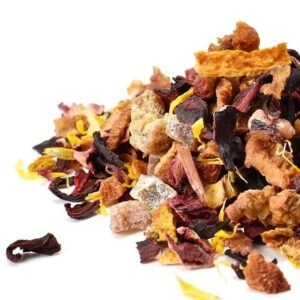
Sweet Peach Fruit Tea
$11.90 – $16.90Price range: $11.90 through $16.90 Select options This product has multiple variants. The options may be chosen on the product page





Reviews
There are no reviews yet.